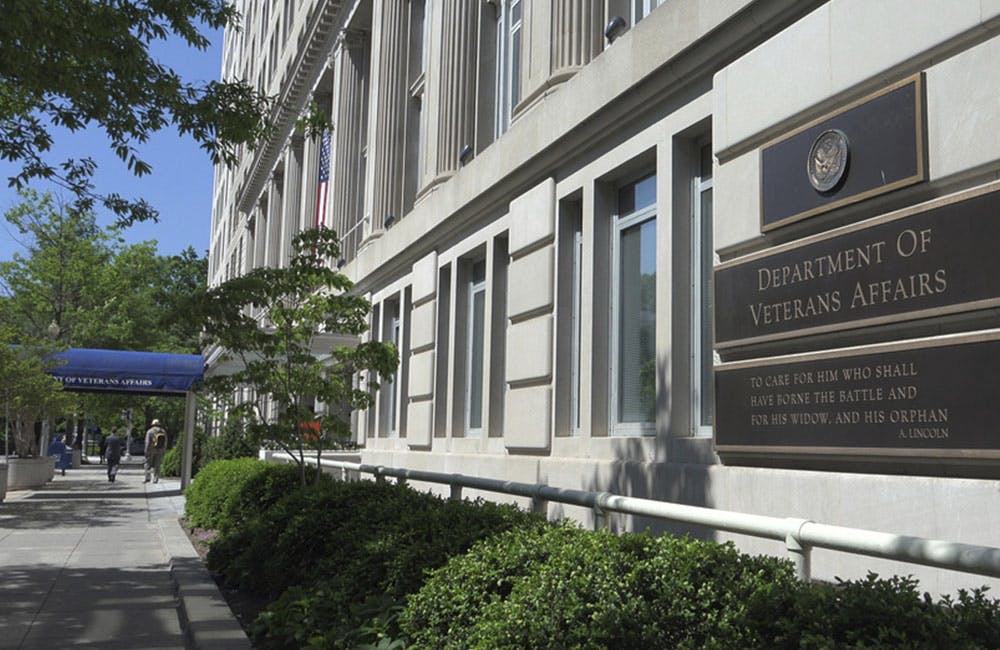AI’s Role in National Security Hinges on Data Quality
Defense IT officials warn of “hallucinations” and uncertainty in AI output, stressing need for rigorous validation.

Artificial intelligence implementation for national security requires agility, data integrity and strategic adaptation, defense officials said Thursday at the Defense IT Summit in Arlington, Virginia.
“There are constant innovations out there. How can we take what’s there, apply it really quick and see that we’re getting value?” said Deepak Seth, chief engineer of the Emerging Technologies Directorate at the Defense Information Systems Agency (DISA). “If it’s not valuable, [we need to] stop and pivot over to the next thing.”
Agility in collaboration with industry and other government organizations can provide Defense Department offices and units with more innovative AI solutions in national security, Seth added.
“There is a lot of innovation happening in a commercial space that can really apply in government,” Seth said. “It’s that combination and working with our partners in government as well in academia. I think to look at these to solve some of these challenges.”
AI implementation requires quality data to train and operate models, officials said. As such, uncertainty can be a data challenge, said Naval Research Laboratory Research Scientist Raj Dasgupta at the event.
“The main problem comes from not in the data, but rather being able to assess the quality of the data,” said Dasgupta. “If you know for certain that the data is bad, we are good because we can discard that [bad data]. If you know for certain the data is good, then we can use that. But the more uncertain we are about the data, if we do not know whether it’s good or bad, that’s where the main issue comes.”
“Essentially, when we look at data, just by looking at data — especially with the genAI techniques coming out, we do not know whether the data is the real data or whether it is a hallucination of the AI,” said Dasgupta.
Organizations need to validate data in implementing AI models to ensure transparency and efficacy, said GitLab Federal CTO Joel Krooswyk during the panel.
“We’re doing a lot of validation every model that comes out. What are the answers we’re getting? Are we seeing points of hallucination that we want to avoid?” Krooswyk said. “We can’t confirm every single answer. That’s what the humans are in the loop for.”
Dasgupta, whose research focuses on game theory and adversarial attacks, said that bringing AI to warfighters is critical to strengthening national security, but that data integrity is critical to that mission.
“What we need to do is essentially develop our AI techniques so that we can respond to the enemy and stay one step ahead of them,” Dasgupta said. “The scale of data is something that we have not seen in the past. … Now we have enormous amounts of data, but we are not so sure about the source of the data.”
Agencies need to adopt AI strategically and quickly for maximum efficacy, Krooswyk said. Just rolling it out to staff can produce scattershot benefits and results, he said.
“It’s really important for us to understand, if we’re rolling it out in our organization, where are the best benefits and why?” said Krooswyk. “I think it’s important for us to be able to find those pockets in our organizations to say, ‘Okay, what is it that you need AI to do for you, and how do we better get you there?’ versus saying, ‘Here’s the standard for the organization for using it.’”
The size and scope of AI presents challenges for agencies, officials said, that require planning. Seth noted that the rise of AI requires complicated decision-making.
“We’re seeing an uptick in the amount of use cases,” said Seth. “These models have been trained on vast amounts of data, essentially the entire corpus of the internet, and this is something that would be very difficult for us to develop or to build or to train given the vast amounts of compute needed.”
Dasgupta added that AI’s evolution requires a combination of speed and effective decisions to counter adversarial AI uses to bolster national security.
“AI has changed at an exceptional speed,” said Dasgupta “The time that the enemy takes to respond or to attack us, and the precision with which the enemy can attack us, has gone down a lot. … What we have to make sure is we proactively go and model what topology would be able to do and essentially try to build our defenses against that.”
This is a carousel with manually rotating slides. Use Next and Previous buttons to navigate or jump to a slide with the slide dots
-

VA's Platform One Powers Rapid Innovation to Bolster Digital Services
VA's Platform One accelerates software development timelines from weeks to hours, ultimately enhancing digital services for veterans.
5m read -

Opinion: Original Intelligence Is the Missing Piece for AI Transformation
Limitations of AI agents and development drive growing needs for workforce development and "original intelligence."
3m read -

Pentagon's $200M AI Contracts Signal Broader Effort to Transform Talent
The Army is leveraging Silicon Valley, reservist programs and new hiring strategies to integrate critical digital skills in its ranks.
5m read -

AI Foundations Driving Government Efficiency
Federal agencies are modernizing systems, managing risk and building trust to scale responsible AI and drive government efficiency.
43m watch -

Inside DOD’s Push to Grow the Cyber Workforce Through Academia
Diba Hadi gives her first interview since becoming principal director of the DOD’s Cyber Academic Engagement Office.
15m listen -

Agencies Tackle Infrastructure Challenges to Drive AI Adoption
Federal agencies are rethinking data strategies and IT modernization to drive mission impact and operational efficiency as new presidential directives guide next steps.
5m read Partner Content -

Generative AI Demands Federal Workforce Readiness, Officials Say
NASA and DOI outline new generative AI use cases and stress that successful AI adoption depends on strong change management.
6m read -

The Next AI Wave Requires Stronger Cyber Defenses, Data Management
IT officials warn of new vulnerabilities posed by AI as agencies continue to leverage the tech to boost operational efficiency.
5m read -

Federal CIOs Push for ROI-Focused Modernization to Advance Mission Goals
CIOs focus on return on investment, data governance and application modernization to drive mission outcomes as agencies adopt new tech tools.
4m read -

Fed Efficiency Drive Includes Code-Sharing Law, Metahumans
By reusing existing code instead of rewriting it, agencies could dramatically cut costs under the soon-to-be-enacted SHARE IT Act.
5m read -

Agencies Push Data-Driven Acquisition Reforms to Boost Efficiency
New initiatives aim to increase visibility of agency spending, improve data quality and create avenues to deploy solutions across government.
5m read -

Data Transparency Essential to Government Reform, Rep. Sessions Says
Co-Chair of the Congressional DOGE Caucus Rep. Pete Sessions calls for data sharing and partnerships to reduce waste and improve efficiency.
5m read
















